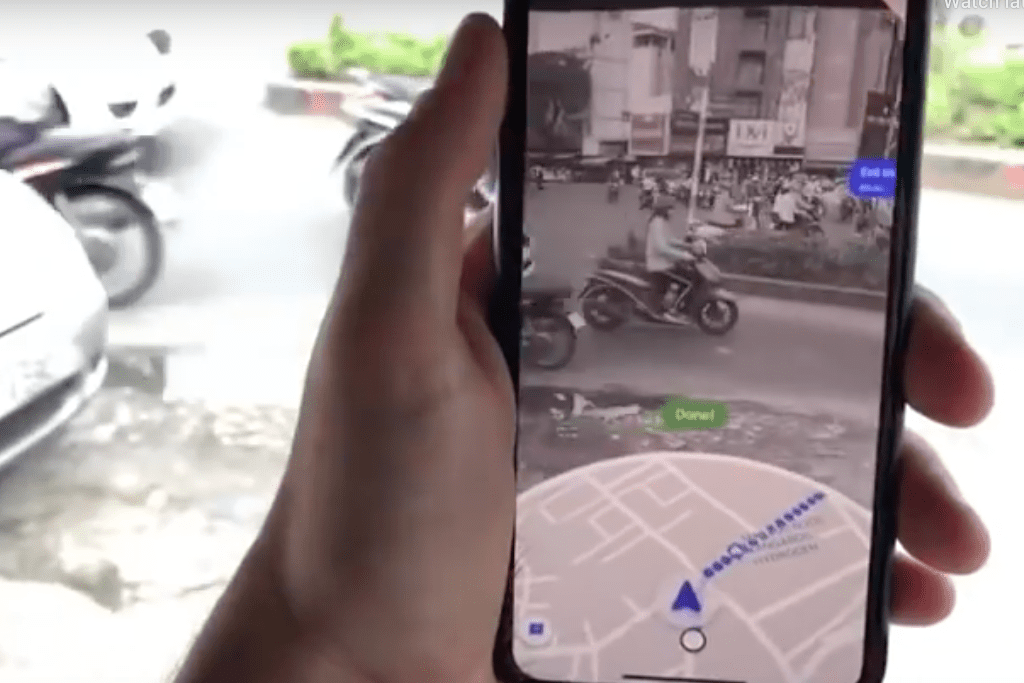Skift Take
When you're Google, you can take more than a decade to hone a product such as Google Maps and attract more than a billion users without having to worry that it isn't making lots of money. But the monetization of Google Maps will soon start in earnest, and travel marketers, for the most part, will hustle to get in.
With more than a billion users, it’s hard to think of Google Maps as a fledgling business, but it is, relatively speaking, in terms of its efforts to rake in big money.
That’s all about to change, according to a research note from Morgan Stanley analyst Brian Nowack. Some of Google Maps’ advertising products are expected to come out of beta in the fourth quarter and into 2020, leading Alphabet to grow its maps revenue 64 percent to $4.86 billion in 2020, Nowack projected.
New travel products, as well as augmented reality features and promoted pins that show the location of a business within Google Maps “are likely to further increase Google Maps’ user utility and monetization potential,” according to the research note.
And that’s just the start. Morgan Stanley estimates that Google Maps revenue, both from desktop local search ($1.23 billion) and mobile ($9.82 billion) will total more than $11 billion in 2023.
“With 1 billion-plus users, Google Maps is a utility-like service (similar to Search) and in our view, remains the most under-monetized asset that we cover,” the research note said.
In the Skift deep dive Google Maps Is Ready to Transform the World of Superapps, we estimated that Google Maps was a several-billion-dollar business (Morgan Stanley estimated maps will generate $2.95 billion in revenue for Google in 2019), as it becomes an all-encompassing utility for navigation, mass transit options, and “near me” searches for hotels, restaurants, spas, and retail outlets.
Some $3 billion in advertising revenue today — or even $11 billion four years from now — is a proverbial drop in the bucket for Alphabet, Google’s parent, which raked in $116 billion in advertising revenue last year. But, as Google Maps unveils its new advertising products on desktop and mobile, it’s clearly on an upward trajectory as a money machine and as a gateway to other Google businesses, such Google Hotels, Google Flights (on desktop), restaurants, and shopping.
Morgan Stanley said Google Maps will attract both local and national — international, actually — as well as branded ad dollars even if maps won’t bombard users with advertisements. The bank’s estimate of $1.6 billion of additional Google Maps ad revenue in 2020, compared with this year, assumes that ads will only be shown in around 45 percent of search queries. Only about one-third of the Google Maps ad revenue will be incremental to the company, according to Morgan Stanley. In other words, two-thirds of the revenue will likely be reallocated from other advertiser spend on Google.
Ad Products Will Generate Higher Costs
Morgan Stanley said sponsored listings will be a key element in the growth of Google Maps advertising revenue. “This will allow large retailers, brands, and local businesses to reach potential shoppers within their geographic area who express intent (‘search for doughnut shops near me’ as an example). Over the long term, serving ads with this level of intent-driven targeting has the potential to lead to even higher paid-search return on investment and cost-per clicks.”
Along with sponsored listings, promoted pins, augmented reality features, and new travel products are expected to accelerate the monetization of Google Maps, the research note said. Morgan Stanley did not detail what those new travel products might be.
Morgan Stanley assumed that click-through rates for Google Maps advertising would be about 50 percent of search advertising and that costs per click would initially come with a 25 percent discount compared with search ads on desktop (an estimated $1.46 in 2020) and mobile ($.0.28).
Google Maps officially launched in the United States — its first market — in 2005, and now offers navigation services in more than 240 countries and territories; it’s an almost indispensable tool for Western consumers. Google has the luxury of being able to take its sweet time in improving the user experience in Google Maps, largely regardless of the red ink.
But, when Google Maps officially rolls out its new advertising products over the next few months, the would-be superapp will enter a new phase — serious monetization.
The Daily Newsletter
Our daily coverage of the global travel industry. Written by editors and analysts from across Skift’s brands.
Have a confidential tip for Skift? Get in touch
Tags: advertising, google, google maps, hotels, marketing, restaurants
Photo credit: Google Maps rolled out an augmented reality feature. A traveler tries it in Vietnam. Justanothersimian / YouTube
